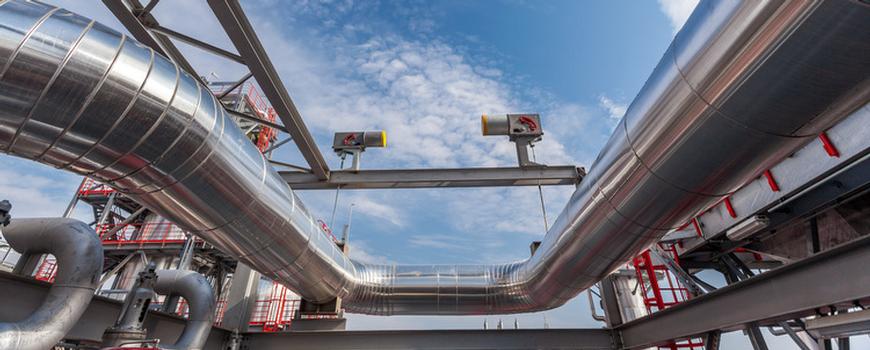
As part of the process of implementing the Seveso III Regulations (SI 209 of 2015) in Ireland, the Health & Safety Authority (HSA) has produced a new guidance document for the preparation of safety reports.
This new guidance, which incorporates consultation feedback from interested parties (including Byrne Ó Cléirigh) describes the HSA’s requirements for safety reports and the level of detail that should be included. While the document was prepared for use by the HSA’s own inspectors, to assist them when reviewing safety reports, it has been published and is available for use by the operators of upper tier establishments.
Familiar structure but new content
As with the previous guidance, the new document specifies five high-level elements that must be included in a safety report and describes the level of detail that should typically be provided with respect to each.
- Descriptive
- Major accident prevention policy (MAPP) & safety management system (SMS)
- Predictive
- Technical
- Emergency response
The structure of the new guidance is more or less the same as the previous document. However, it incorporates important changes to the requirements for safety reports, which must be borne in mind by operators when preparing safety reports for submission to the Authority.
We summarise some particularly noteworthy changes to the guidance below. Note that the following does not constitute a comprehensive point-by-point comparison of the new and old guidance, and the implications of some of the changes will vary significantly for different operators.
Additional descriptive elements
There are more detailed information requirements with respect to the descriptive elements in a safety report. The new guidance provides useful checklists on the type of information and the level of detail that should be provided in a report to describe the site and the surrounding area.
Safety management system
The SMS section of the safety report must now reflect the latest MAPP. Operators were required to update the MAPP by June 2016, in compliance with the 2015 legislation. The new requirements include elements relating to organisation and personnel, operational control and performance monitoring, including the use of leading and lagging safety performance indicators (case study).
The new guidance also provides details on other additional information that should be included in this section to demonstrate that the operator has a comprehensive and coordinated approach to safety management.
More emphasis on quantitative risk assessment
Although the guidance does not require that all operators carry out fully quantitative risk assessments (QRA), there is greater emphasis on the use of quantitative criteria for assessing risk and for demonstrating that ‘all necessary measures’ are in place. While the guidance is not overly prescriptive, several operators are using techniques such as LOPA (layers of protection analysis) as a means to satisfy the latter requirement.
There is also new guidance provided on the criteria for assessing the tolerability of risks to the environment from major accidents.
Technical elements
The guidance requires that the technical elements section of the safety report must provide sufficient detail to demonstrate that safety and reliability have been accounted for in the design, construction, operation and maintenance arrangements as they relate to the control of major accident hazards at the site. This area is addressed in the guidance under a variety of topic headings, including mechanical safety, electrical control and instrumentation, process safety and human factors. The safety report must also demonstrate how a hierarchical approach has been adopted in this regard.
Emergency planning
The section of the safety report relating to emergency response must demonstrate how the emergency response planning arrangements are linked to the major accident scenarios identified for the site. The arrangements that are in place should be appropriate for the implementation of the emergency plan (preparation, testing, review, training, mobilisation of resources). The interactions between the operator and the emergency services must also be described.
Safety report assessment
Once received, the HSA will assess a safety report and issue its conclusions within 4 months. Each sub-section in the guidance document is annotated with one, two or three asterisks to aid the inspector during the assessment process:
- * indicates criteria which, if not met on their own, would constitute an omission from the safety report.
- ** indicates criteria which, if not met on their own, could constitute a significant omission.
- *** indicates criteria which, if not met on their own, could constitute a serious deficiency.
If the Authority concludes that there are omissions or significant omissions from a report, then a request for further information is issued to the operator. This is a once-off opportunity for the operator to provide additional information. The information must be submitted within one month of the date of the HSA request, or within such longer period as the Authority may specify in writing.
If the HSA subsequently rejects the safety report on the basis of the revised submission, there is no regulatory mechanism for the operator to provide further information with respect to the original safety report submission. Under these circumstances the operator must submit a new safety report for full assessment and the up-to-4-month process begins again.
Safety report reviews & updates
Operators must review and update their safety reports on a five-yearly basis, as a minimum. A review can also be triggered at any time where specific circumstances arise, e.g. if there are significant changes at the site, or where new facts or new technological knowledge about safety matters, which justify a review, come to light .
